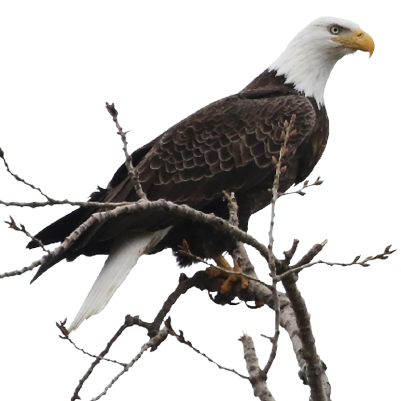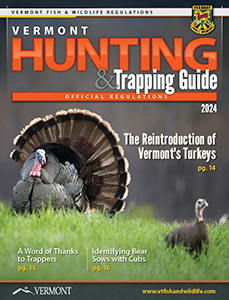Non-Lead Ammunition: Good for Wildlife, Good for Hunters

Photo by
D. Andrew Saunders
Lead is indisputably toxic. This includes the lead in your ammunition.
As they expand, lead bullets scatter fragments well beyond the point of entry. These fragments can, in turn, be ingested by wildlife when they scavenge leftover carcasses and gut piles or prey on other animals that have ingested the fragments. Even small amounts of lead can cause multiple health problems and death. Birds, such as bald eagles and other raptors, are particularly vulnerable to lead poisoning. While not causing population declines in Vermont, hunting with lead ammunition does leave the door open to accidently taking more than your intended game.
Fortunately, there is an easy fix: the voluntary use of lead-free ammunition. Without sacrificing performance, going lead-free prevents unintentional harm to wildlife, improves hunting’s image, and addresses human health concerns. Lead particles in game meat are often too tiny to detect by sight, feel and taste. Making the switch avoids unknowingly exposing family and friends to lead, and, as a bonus, it might even result in more game to share; non-lead bullets and shot are often more effective.
Biting the Non-Lead Bullet is Easy
- Non-lead bullets are factory loaded by most manufacturers in most popular big game hunting calibers.
- Solid copper and copper alloy bullets offer consistent expansion and excellent weight retention and, as result, delivering deep penetration.
- Less fragmentation equals less meat loss.
- Non-lead bullets are longer. Consider reducing bullet grain size by 15-20% for comparable performance to your current load.
- Highly frangible (brittle), non-lead small caliber bullets are available for both centerfire and rimfire cartridges.
- Required for waterfowl hunting for over thirty years, non-lead shotshells now cover everything from woodcock to wild turkey. This includes .410.
To learn more about switching to non-lead ammunition and for tips to finding the right non-lead ammunition visit: http://www.nonleadpartnership.org and www.huntingwithnonlead.com

